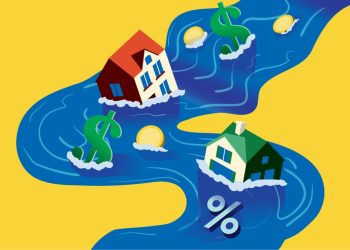The Spring 2016 homebuying season will soon mark the sixth year into the housing recovery. With steadily rising property values and homeowners’ equity, the housing market continues to regain its footing while mortgage delinquency and home foreclosures are falling to all-time lows since the 2007 housing downturn.
Early estimate shows the average home price in April reached $231,000, up 7.4 percent from the same period a year ago. At the current pace of the recovery, this spring and summer will soon mark the first time that home prices will rise above the 2006-2007 peak levels.
However, the rate of price appreciation has notably tapered off from its double-digit days of 2012 and 2013. After dropping to its lows at the end of 2014, the year-over-year growth has since held up at an arguably more sustainable rate of 5 to 6 percent.
Heading into the busiest homebuying season, one of the biggest stories about the spring market is, once again, a tale of inventory shortage and inadvertently, escalating bidding wars. In other words, this spring appears no different from 2013, 2014, and 2015, in that the limited supply of homes for sales continue to constrain would-be buyers in their ability to finding a suitable home to purchase.
Also making headlines everywhere is what seems to be another rather persistent phenomenon: The ongoing housing crunch appears unevenly felt by first-time homebuyers due to even lower inventory of entry-level homes. First-time homebuyers typically make up less than one third of the homebuyers, and the latest homebuyer profile surveys by the National Association of Realtors put the number more at 30 percent.
In fact, there are signs that the supply shortage and resulting price bidding are driving prices of entry-level homes to rise much faster than the median property on the market.
In March, first-time buyers paid about $137,000 for a starter home – defined as having a sale price in the bottom 30th price distribution – up 6.0 percent from a year ago. During the same period, the median price rose at a slower rate of 4.3 percent year-over-year to $220,000, the difference being 1.7 percent. Plotted below are monthly differences (based on 3-month moving average) in the year-over-year growth rate between starter and median homes. In the last 18 months, starter homes appreciate by about 1.5-2.0 percent faster than the median home sold in the market.
A note of caution. The impact of the ongoing housing crunch will likely play out differently across the country. In markets on the West Coast where the recovery has been strong and job growth robust, first-time buyers are likely to feel the greatest pinch in affordability. On the other end of the spectrum, the housing crunch in many Midwest markets – with their recovery at best described as anemic – may not have much bearing on first-time buyers. The chart below provides a glimpse of the large disparity in the ongoing housing recovery.
Also, let’s not forget about the winners at large on the other side of the housing crunch – existing homeowners looking to sell their current home. Rising home prices evidently mean – to the remaining 70 percent repeat and move-up homebuyers – rising affordability as their homeowner’s equity grows. With more equity to be extracted, it also means affordability of larger down payment towards the next house. And escalating bidding wars will only help them sell and secure the next house faster, much faster.
For more information, visit www.fncinc.com.










